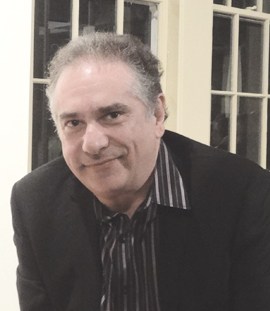The long-planned, top-driven Gowanus rezoning plan is reaching climax this year, as a large group of local, term limited politicians are set to walk out the door.
As Gowanus historian Joseph Alexiou once proclaimed a bit ironically at the Brooklyn Historical Society, the story of New York is the story of real estate.
Probably inevitable after the communities of Park Slope and Carroll Gardens moved from squalor into luxury as the bankrupt 1970s became the luxurious 1990’s and 2000s, Gowanus, smack between those monied communities, has become treasured land for builders of luxury residential towers.
Toll Brothers, one of the country’s largest developers planned a huge development adjacent to the Canal in 2008. But a couple years later, partly due to the work of Congresswoman Nydia Velazquez, the Canal was named a Superfund site, a designation fought by the Bloomberg administration, and Toll abandoned Gowanus for the then new Brooklyn Bridge Park, where they built condos and the hotel.
Three years later, the Star-Revue received the following press release, which began:
FOR IMMEDIATE RELEASE – November 20, 2013
Contact: Alex Moore
Office: (718) 499-1090
amoore@council.nyc.gov
Community Planning Process for Gowanus Area to Begin December 9th
“Bridging Gowanus” will give residents a say on the future of their neighborhood.
End result will be a community supported blueprint for an environmentally safe, vibrant, and sustainable Gowanus to inform de Blasio Administration
Bridging Gowanus was a top down process that was thrust upon the neighborhood.
The first meeting was a well attended affair, where somewhat bewildered locals were fed a pre-packaged plan that was supposedly crafted by local stakeholders a few months before.
Pratt Institute presented a slideshow presentation of the plan in front of the crowd, but questions and comments were not allowed.
Instead, the residents were shepherded to various and separate tables where minders pushed the residents into outcomes desired by the process.
Now we are in the stretch run of the rezoning process. Governnment’s desired outcome has become 30 story residential buildings, the majority of the units overpriced luxury units, no doubt a large number will be bought by investors looking for safe places to park their money. Back in 2016, they were only talking about 12 story buildings, but inflation has taken root as the cost of land speculation has boosted land costs.
Community Board 6 began the final process with an approval of the rezoning with conditions.
What follows is my take of the conditions, as space permits.
1 – Accountability
To hold the City and all parties accountable for the commitments they make as a part of the Rezoning, the Board demands that the City support and fund the Gowanus Zoning Commitment Task Force.
Comment: The Brooklyn Bridge Park Corporation was forced by State Senator Daniel Squadron to create a local advisory group to form to oversee their operations. I went to a couple of meetings. They got absolutely no cooperation from the Corporation and nothing they said was ever listened to.
2 – Combined Sewer Overflows
CSOs are a significant and ongoing source of pollution in the Gowanus Canal, and the Rezoning must result in a net decrease in CSOs.The Board cannot support the Rezoning without independent review of the City’s projections and City compliance with its legal obligation to control outfalls.
Comment: I am a member of the Supefund Advisory Group, and the lack of NYC cooperation with the EPA is a constant complaint, including accurate information about overflows.
3 – EPA review
The Board requests EPA’s written review of the City’s CSO projections,
Comment: Nice request. What will CB 6 do with the information. Their main power is simply advisory.
4 – Compliance with EPA
The Board demands that the City fully comply with the EPA’s order to complete the retention tanks on the EPA-mandated timeline.
Comment: Meaningless. The EPA has already said they would take the city to court if there is no compliance.
5 – Unified Stormwater Rule
To ensure that the Rezoning does not result in a net increase in CSOs, the City must require the Unified Stormwater Rule to be in effect prior to the first site sewer connection in the Rezoning area.
Comment: According to the DEP website, this rule will be in effect this year. New buildings won’t happen for at least a couple years, so yet another meaningless condition.
6 – Implementation.
Irrespective of its initial projections, the City must ensure that CSO impacts are continually modeled, monitored, and timely reported, and that each sewer connection is modelled for its individual impact on sewer capacity.
Comment: The EPA, which reigns sovereign over NY City and State, is already going to be demanding this. So again, big whoop-de-do.
7 – Sewer system capacity
The DEIS identifies two water treatment sites that serve Gowanus and asserts that they have capacity to cover an anticipated increase in sewage. However, the DEIS does not study the capacity for regular dry day sewage flow from Gowanus to the Red Hook Treatment Plant through existing underground viaducts. The Board demands that the final EIS correct this oversight.
Comment: OK, so study. Big deal.
8 – Environmental Remediation
The Board understands that the Rezoning is an opportunity to repair decades of pollution, but additional assurances are needed to ensure that remediated sites are fit for residential use.
Comment: What the hell are additional assurances?
9 – Review of Public Place.
The Board’s conditional support for the proposed development at Public Place is contingent on the EPA’s continued review of remediation at the site and its ultimate conclusion that the remediation is compatible with the proposed residential, educational, and recreational uses.
Comment: The Superfund’s chief engineer made some comments about this last year and the city and state tried to censure him. Once the rezoning is approved there will be nothing the EPA can do about this since they are tasked with just the Canal’s remediation, not the upland spaces.
10 – EPA Review of Brownfield Development Projects.
The Board demands that EPA review individual development applications in advance of permitting to ensure that proposals are consistent with the Superfund cleanup and public health.
Comment: Who is going to pay for these reviews? It is not part of the Superfund duties.
More
This is only about a third of the conditions. Much of the rest have to do with housing and culture – all things that are written into the actual EIS (which is the text of the rezoning, actually).
To me, the worst of it is what I consider a bribe given to the local public housing projects, paid by the City.
If what it takes to fix up my building is a giveaway of nearby public goods to private developers, then every public housing resident will clamor for a neighborhood-busting rezoning in their neighborhood.
The correct answer is to treat all public housing equally, and get them all up to snuff, as Nydia Velazquez recently demanded on her recent tour of the Red Hook Houses, demanding $40 billion federal dollars for NYCHA.
Author
-

George Fiala has worked in radio, newspapers and direct marketing his whole life, except for when he was a vendor at Shea Stadium, pizza and cheesesteak maker in Lancaster, PA, and an occasional comic book dealer. He studied English and drinking in college, international relations at the New School, and in his spare time plays drums and fixes pinball machines.
View all posts
George Fiala has worked in radio, newspapers and direct marketing his whole life, except for when he was a vendor at Shea Stadium, pizza and cheesesteak maker in Lancaster, PA, and an occasional comic book dealer. He studied English and drinking in college, international relations at the New School, and in his spare time plays drums and fixes pinball machines.











One Comment
I am concerned that an EPA “review” of city sewage assessment is not sufficient to meet the federal obligations under Superfund CERCLA and those under Clean Water Act. lt looks like the feds need to make their own assessments that specifically answers the questions on how the rezone will effect the existing federal noncompliances, and it looks like such assessments need to be done before the new land use policy is put into place.